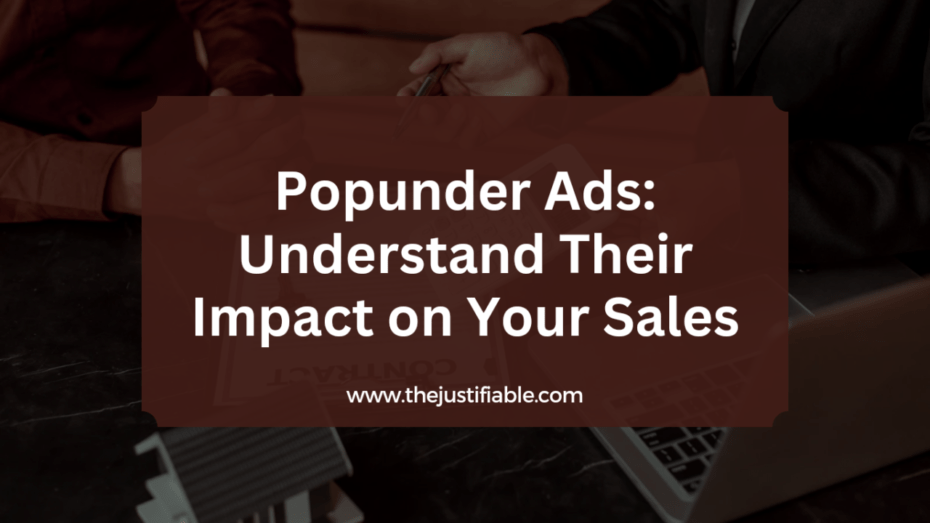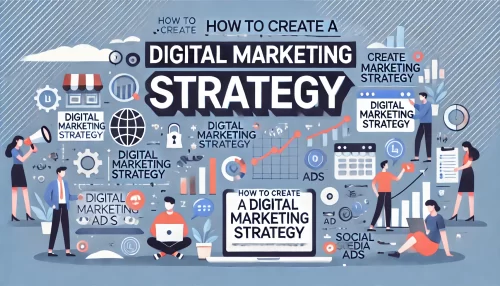Popunder ads! The rapidly evolving landscape of digital advertising is inundated with an assortment of strategies designed to reach audiences and convert leads into customers. Amidst the medley of options, one technique that has grown in prevalence and notoriety is the use of popunder ads.
But, what exactly are popunder ads? How have they risen in popularity, and how are they transforming the digital advertising arena? This article will dive deep into these topics, illuminating the influence of popunder ads on sales and business growth.
Understanding Popunder Ads
Popunder ads are a type of online advertising that opens a new browser window under the current active window. Unlike popup ads, which appear in front of your current browser window, popunder ads are designed to be less obtrusive as they don’t immediately interrupt the user’s browsing experience. They linger in the background, ready to be viewed once the user closes or minimizes the active window.
In essence, popunder ads are intended to capture the user’s attention in a subtler way, without causing the immediate disruption often associated with more aggressive advertising forms.
They can be used to promote various offerings, from products and services to subscriptions, and are often employed in retargeting strategies to recapture potential customers who have shown prior interest.
The Rise of Popunder Ads in Digital Advertising
Over the past decade, the usage of popunder ads has surged in digital advertising. This rise can largely be attributed to their strategic design and the unique benefits they offer.
One of the factors driving the increased use of popunder ads is their ability to catch the user’s attention without causing immediate disruption.
This approach enhances the probability of engagement as users are likely to give undivided attention to the ads once they are done with their main browsing activity. As a result, popunder ads tend to have a higher viewability rate compared to other types of digital advertising.
Furthermore, the rise of advanced targeting capabilities has played a significant role in the growing popularity of popunder ads. These ads can now be tailored to users based on a variety of factors, such as their browsing history, location, and demographic details, making them an effective tool for highly targeted marketing campaigns.
The Mechanism of Popunder Ads
As digital advertising continues to evolve, popunder ads have found their place in the toolkit of marketers seeking non-disruptive yet effective means of reaching their target audience.
Understanding the mechanics of popunder ads is crucial to appreciating their potential impact on your sales. Let’s examine how popunder ads work and how they distinguish themselves from other ad formats.
How Popunder Ads Work
Popunder ads operate in a relatively straightforward manner. When a user visits a website with popunder ads, these ads are programmed to launch a new browser window that appears behind the active window the user is viewing. This new window, which contains the ad, remains unnoticed until the user closes or minimizes the currently active browser window.
The primary intent of popunder ads is to present the advertisement in a less intrusive way, allowing users to continue their initial activity without disruption. Once the user finishes their browsing session, they’re then exposed to the ad. This ensures the user’s undivided attention, increasing the chances of interaction with the advertisement.
The success of popunder ads is also influenced by various parameters, such as ad relevance, design, and call-to-action. Proper targeting is crucial, and leveraging user data can help tailor popunder ads to align with user preferences and behaviors, making the ads more appealing and increasing the likelihood of engagement and conversion.
Key Differences Between Popunder Ads and Other Ad Formats
Popunder ads have distinct features that differentiate them from other ad formats in the digital advertising sphere.
One significant difference is their level of user interruption. While pop-up ads interrupt the user’s browsing experience by appearing in the forefront, popunder ads are designed to cause minimal disruption by appearing behind the active browser window.
Another unique aspect is their ability to capitalize on user attention. Traditional display ads or banner ads can often be ignored as they become part of the webpage’s background noise. In contrast, when a popunder ad appears, it is likely to have the user’s full attention, as it becomes visible only after the active window is closed or minimized.
Also, popunder ads are particularly effective for retargeting strategies. By appearing after the user’s session, they offer a reminder or a second chance to engage with users who have shown previous interest in a product or service.
The Impact of Popunder Ads on Sales
Navigating the world of online advertising can be a challenge, particularly when trying to find the most effective way to boost sales. A strategy that has gained traction in recent years is the use of popunder ads. Let’s examine the direct impact of popunder ads on sales and explore some real-life case studies that illustrate their effectiveness.
The Direct Impact of Popunder Ads on Sales
Popunder ads, with their unique placement and subtler approach, can have a notable impact on sales, and there are several reasons why this ad type can be an effective part of your advertising strategy.
Firstly, popunder ads tend to capture the user’s undivided attention. When the active browser window is closed, the ad is fully visible, making it more likely the user will engage with it. This singular focus can increase the chances of converting a lead into a customer, directly boosting sales.
Secondly, due to their non-intrusive nature, popunder ads tend to create a more positive user experience compared to more disruptive ad types. A positive user experience is crucial for brand reputation, and it can ultimately lead to higher conversion rates.
Lastly, the advanced targeting capabilities of popunder ads can lead to more effective and efficient marketing campaigns. These ads can be tailored based on users’ online behavior, interests, demographics, and more, ensuring that your ads reach the right people at the right time. This precision targeting can lead to higher conversion rates, directly impacting sales.
Case Studies Showing the Effect of Popunder Ads on Sales
To demonstrate the effect of popunder ads on sales, let’s examine a few case studies.
One online retail company saw a significant increase in sales after incorporating popunder ads into their advertising strategy. They utilized a strategy that served popunder ads to users who had visited their site but didn’t make a purchase. The ads highlighted items the user had shown interest in, leading to a 25% increase in conversion rates.
Another case study involves a SaaS (Software as a Service) provider who decided to experiment with popunder ads as a part of their retargeting campaign. The results were staggering, with the company recording a 30% increase in software downloads, directly translating to an increase in sales.
These case studies highlight the potential of popunder ads to boost sales and should give marketers the confidence to consider their use as part of a balanced, comprehensive digital advertising strategy.
The Benefits of Using Popunder Ads
Popunder ads bring a host of benefits that go beyond their initial appeal of non-disruptive advertising. These advantages have made them an attractive choice for marketers aiming to boost sales and engagement. Let’s take a closer look at the high visibility, engagement, and cost-effectiveness that popunder ads can offer.
High Visibility and Engagement with Popunder Ads
One of the primary benefits of popunder ads is their high visibility. Unlike traditional display ads, which often blend into the webpage and can be easily ignored, popunder ads command attention. Once the active browser window is closed or minimized, the ad is fully visible, without competing elements on the screen. This solitary focus on the ad can significantly improve visibility and consequently, engagement.
Also, popunder ads are designed to be less intrusive, causing minimal disruption to the user’s browsing experience. This subtlety often translates to better user receptiveness and higher engagement rates compared to more intrusive ad types.
Furthermore, the effective use of targeting and retargeting capabilities ensures that popunder ads are highly relevant to users, which is another crucial factor driving engagement. By presenting users with ads that align with their interests or previous online behavior, you increase the chances of capturing their attention and motivating them to take action.
Cost-Effectiveness of Popunder Ads
When it comes to digital advertising, return on investment is paramount, and this is another area where popunder ads shine. They offer a cost-effective advertising solution compared to many traditional forms of online advertising.
Firstly, popunder ads typically operate on a Cost Per View (CPV) model. This means you only pay when your ad is actually viewed, not merely when it’s served. This pricing model ensures that your advertising budget is spent on genuine views, maximizing the value of each ad impression.
Moreover, the high engagement rates associated with popunder ads can lead to higher conversion rates. More conversions mean more sales, boosting your return on investment.
Lastly, the precise targeting capabilities of popunder ads minimize wasted impressions by ensuring your ads are served to users who are most likely to be interested in your offering. This targeting efficiency not only reduces wasted advertising spend but also increases the chances of conversion, making your advertising budget work harder for you.
How to Implement Popunder Ads for Optimal Sales
Implementing popunder ads requires careful planning and strategic thinking to ensure they drive the desired results. Choosing the right platform, designing effective ads, and following best practices can all contribute to maximizing the impact of your popunder ads on sales. Let’s explore each of these areas in more detail.
Choosing the Right Platform for Your Popunder Ads
The first step in implementing popunder ads is selecting the right platform. A number of digital advertising platforms offer popunder ad options, including Google Ads and several dedicated popunder ad networks.
When choosing a platform, consider factors such as its reach, targeting capabilities, cost, and the types of websites it works with. A platform with a wide reach and advanced targeting options can increase the chances of your ads being seen by your target audience. Additionally, the platform should fit within your advertising budget and align with your brand values.
Remember, the goal is not just to serve ads, but to serve them to potential customers who are most likely to be interested in your offering. Therefore, a platform with robust targeting capabilities can be invaluable.
Designing Effective Popunder Ads to Boost Sales
The design of your popunder ad plays a crucial role in its effectiveness. An ad that is visually appealing and relevant can significantly increase engagement rates and, consequently, sales.
Ensure that your ad’s design aligns with your brand image and is consistent with your other marketing materials. It should be clear, concise, and include a strong call to action.
Furthermore, make sure your ad is relevant and personalized. Use the data available to you from the ad platform to customize your ad content to the user’s interests or online behavior. This can make your ad more appealing to users and increase the chances of engagement and conversion.
Best Practices for Popunder Ad Implementation
To get the most out of your popunder ads, it’s important to follow a few best practices.
First, ensure your ads are relevant and unobtrusive. Users are more likely to engage with ads that are relevant to their interests and don’t disrupt their browsing experience.
Second, leverage targeting and retargeting capabilities. Serve your ads to users who are most likely to be interested in your offering, and use retargeting to re-engage users who have shown interest in the past.
Third, continuously monitor and optimize your ads. Use the data provided by the ad platform to track the performance of your ads. Identify which ads are driving the most engagement and sales, and optimize your campaign accordingly.
The Controversy Surrounding Popunder Ads
Despite their benefits, popunder ads are not without controversy. Some users perceive these ads as intrusive, while others are concerned about their impact on user experience.
These controversies merit consideration as they can influence the effectiveness of your popunder ad strategy and the perception of your brand.
User Perception of Popunder Ads
A significant part of the controversy surrounding popunder ads relates to their perception by users. Some users view them as an unwelcome surprise, popping up uninvited when they close their browser window. This perception could be amplified if the content of the popunder ad is not relevant to the user’s interests.
However, it’s important to note that this perception can be influenced by how well the popunder ads are implemented. Ads that are relevant and non-disruptive are generally better received than those that aren’t. Furthermore, it’s crucial to ensure that your popunder ads do not violate any privacy laws or regulations, which could further negatively impact user perception.
The Balance Between Effective Advertising and User Experience
Balancing effective advertising with a positive user experience is a challenge that many marketers face, and it’s particularly relevant when it comes to popunder ads.
While popunder ads can be an effective advertising tool, they should not come at the expense of user experience. Overloading users with popunder ads or presenting them with irrelevant content can lead to frustration, potentially damaging your brand reputation and driving users away from your website.
To strike the right balance, it’s important to limit the frequency of your popunder ads, ensuring that users aren’t overwhelmed. Furthermore, using robust targeting capabilities can help ensure that the ads presented are relevant and of interest to the user.
Remember, a positive user experience can lead to higher engagement rates, increased brand loyalty, and ultimately, more sales. So while popunder ads can be an effective tool for boosting sales, they should be used judiciously and thoughtfully, with a focus on enhancing rather than detracting from the user experience.
Conclusion
As we conclude our deep dive into the world of popunder ads, it’s clear that these unique advertising tools offer an effective strategy for increasing online sales. However, their use requires careful consideration of platform choice, design, and user experience.
The Future of Popunder Ads in Sales Strategy
Looking ahead, it’s likely that popunder ads will continue to play a significant role in sales strategies. As marketers become more sophisticated in their targeting and personalization capabilities, popunder ads will offer an increasingly precise and efficient way to reach potential customers.
However, marketers must remain mindful of user experience, privacy concerns, and evolving regulations. Balancing these considerations with the need to drive sales will be a key challenge and opportunity for the future of popunder ads. By doing so, they can tap into the full potential of this powerful ad format and drive significant growth in online sales.
Recap: The Power of Popunder Ads for Increasing Sales
To recap, popunder ads offer numerous benefits that can boost your sales. They provide high visibility and engagement, they are cost-effective, and they offer the ability to deliver personalized content directly to your target audience.
However, success with popunder ads requires a thoughtful approach. Choosing the right platform, designing compelling ads, and following best practices for implementation are all crucial. And, of course, keeping the balance between effective advertising and positive user experience should be at the heart of your strategy.
By understanding and leveraging the power of popunder ads, businesses can maximize their online sales potential and stay ahead in the ever-evolving digital advertising landscape. This understanding, coupled with ongoing experimentation and optimization, can help businesses unlock the full potential of popunder ads and drive significant growth in their online sales.
In closing, whether you’re already using popunder ads or just considering them, remember that their true power lies not just in their unique placement, but in their careful, strategic implementation. Keep your focus on the user, and your sales will follow.






